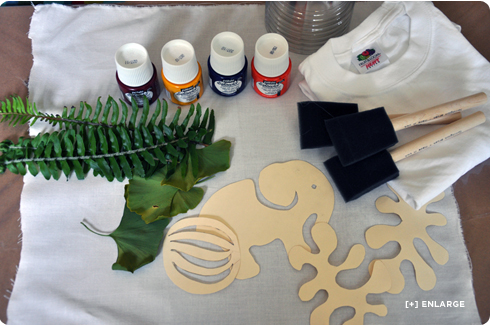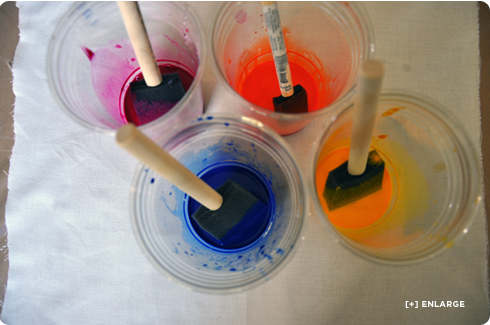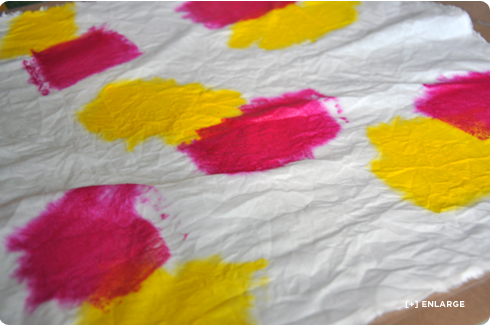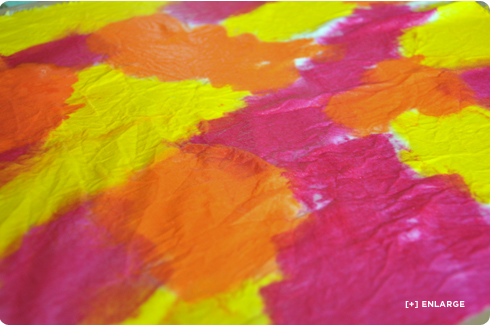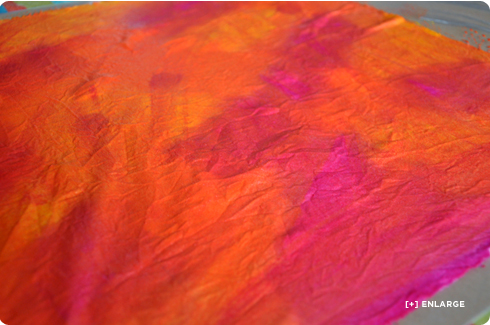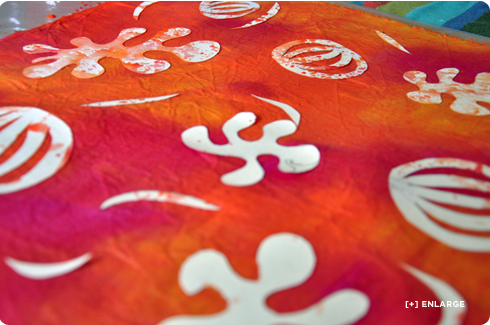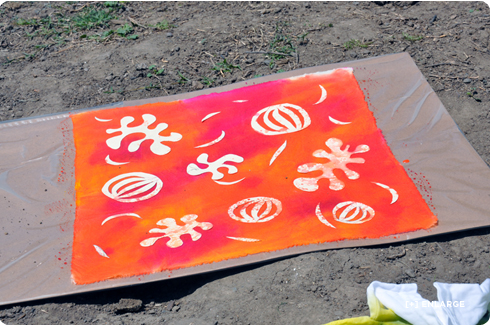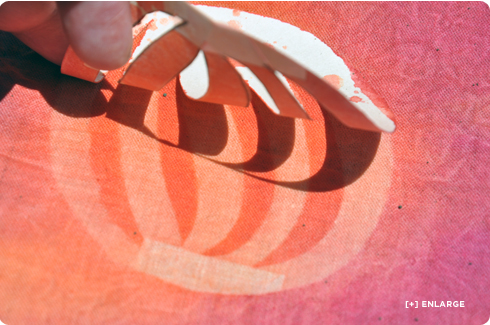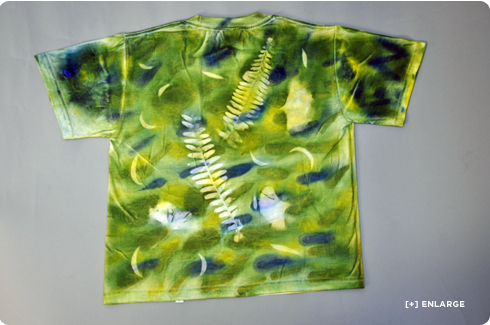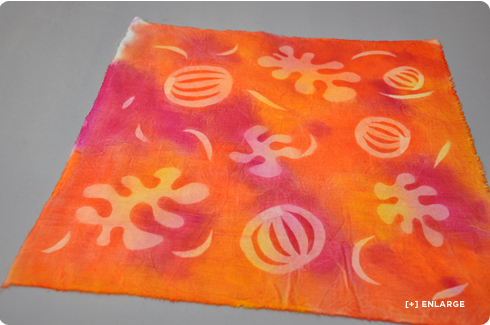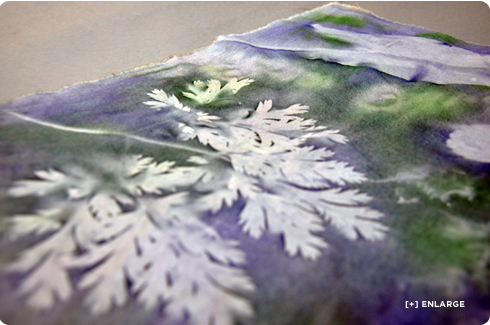
The power of the sun is truly amazing. It makes the grass grow, provides us with light and warmth and can even help us make electricity!
Shopping list:
- Setacolor Transparent Fabric Paint - (we used 45ml bottles of #12 Ultramarine, 13 Buttercup, 21 Bright Orange and 23 Orient Red) but choose any of the Setacolor Paints for light fabrics except the new Glitter colors.
- Cotton Items to Paint - (we used #FLCSS and #KC60 - Pre Washed)
- Foam Brushes
- Cups for mixing
- Water
- Old Manila Folders or Heavy Paper
- Scissors and Pencil
- Found Objects and foliage
- Plastic covered cardboard large enough to support item - (we used a piece of cardboard covered with our #PDC)
- A couple trash bags to put inside garments
Let's get started!
With Setacolor Transparent paints for light fabrics we can also harness the sun's mighty drying abilities to create one of a kind fabric and garments by literally watching paint dry(it's not boring like that though)! Sun Painting is enjoyable and easy for all ages, great for classes, camps and families. Teaching kids about native plants and the cycles of nature has never been more fun!
Before You Start to Paint:
Machine wash your fabric to remove sizing, fingerprints, etc. You can leave it damp if you are going to paint with it right away.
• Mix all your colors. Use 2 parts water to 1 part paint. Be sure to mix enough paint ahead of time. If you are going to mix secondary colors now is the time to do it.
• Gather your resist supplies: leaves, flowers, objects with interesting profiles, etc. Draw and cut out shapes from the manila folders.
• Spread fabric out on your board and wet it with some more water using a foam brush, the material will "stick" to the plastic and the paint will spread better. If you are painting a garment, put a garbage bag inside to separate the front and back to get the clearest print. If you want to paint the whole garment, do one side first from start to finish, and then the other.
Note: It is best to use 100% white cotton fabric. A blend of cotton and synthetic (containing at least 50% cotton) will give you good results but the colors will be less vibrant and the design will not be as resistant to washing.
Start Painting:
Apply the colors lightest to darkest using a foam brush. For a watercolor effect use long smooth strokes, for a more broken up effect dab large spaces of color. Remember to leave unpainted white areas for the colors to spread as you apply them.
To help blend the colors apply more water to the fabric after painting. For less blending, apply less water in the beginning and leave about 1/2 inch between colors. They will move together as they "spread" across the wet fabric. Be sure to paint the entire surface with color - areas remaining white will not print a design image. You will get a more interesting design if you use 2 or 3 colors, but too many colors can get muddy, so take care when choosing where you place colors.
Lay Down Your Resists:
Once the entire piece of cotton fabric is painted, quickly arrange your cutouts and natural items onto the fabric. Carefully push the patterns tight against the fabric; since the fabric is wet they should almost "stick" to the surface. Sprinkle on the silk salt if you want a more textured background, we didn't use any this time.
You can mix the paper patterns and natural items on the same piece. The two work nicely together to create depth and dimension on the painted fabric.
If it is a windy day, small stones may be placed over the paper patterns to hold them down.
Take it Outside!:
Place your board out under the sun*. Watch as the sun dries the fabric and magically prints the design onto the surface! (you might want a popsicle as this can be rather warm work!) Depending on the time of year, your location, the weather, etc. this step can take anywhere from 15 minutes to 1 hour. You can check the progress by carefully lifting the corner of one of the paper patterns.
Once your fabric is COMPLETELY dry remove all the patterns (natural and paper), shake off the salt and you're done! You only need to fix the colors by ironing the fabric for 2 to 3 minutes on the cotton setting. After ironing the fabric should be treated like any piece of cotton. It is machine washable (without bleach) and can be dry cleaned.
You have created your very own, one of a kind item! Show it off! Wear it! Make something out of it! Send us a photo!
Variations:
Please Note:
If the sun is not cooperating you can use a heat lamp or grow lights. Also, if it is sunny but windy the fabric may be placed in front of a large window until completely dry.
This technique also works with other water based fabric paints. The thinner the better. It does not work with thick paints. Watery paints like Dye-na-flow and Setasilk can be used without diluting them with water. Of course, using a paint like Setacolor Transparent and diluting it with water makes it more economical! Use any of the Setacolor Transparent or Fluorescent colors. The new Glitter colors on the Setacolor Transparent page would not work well.








